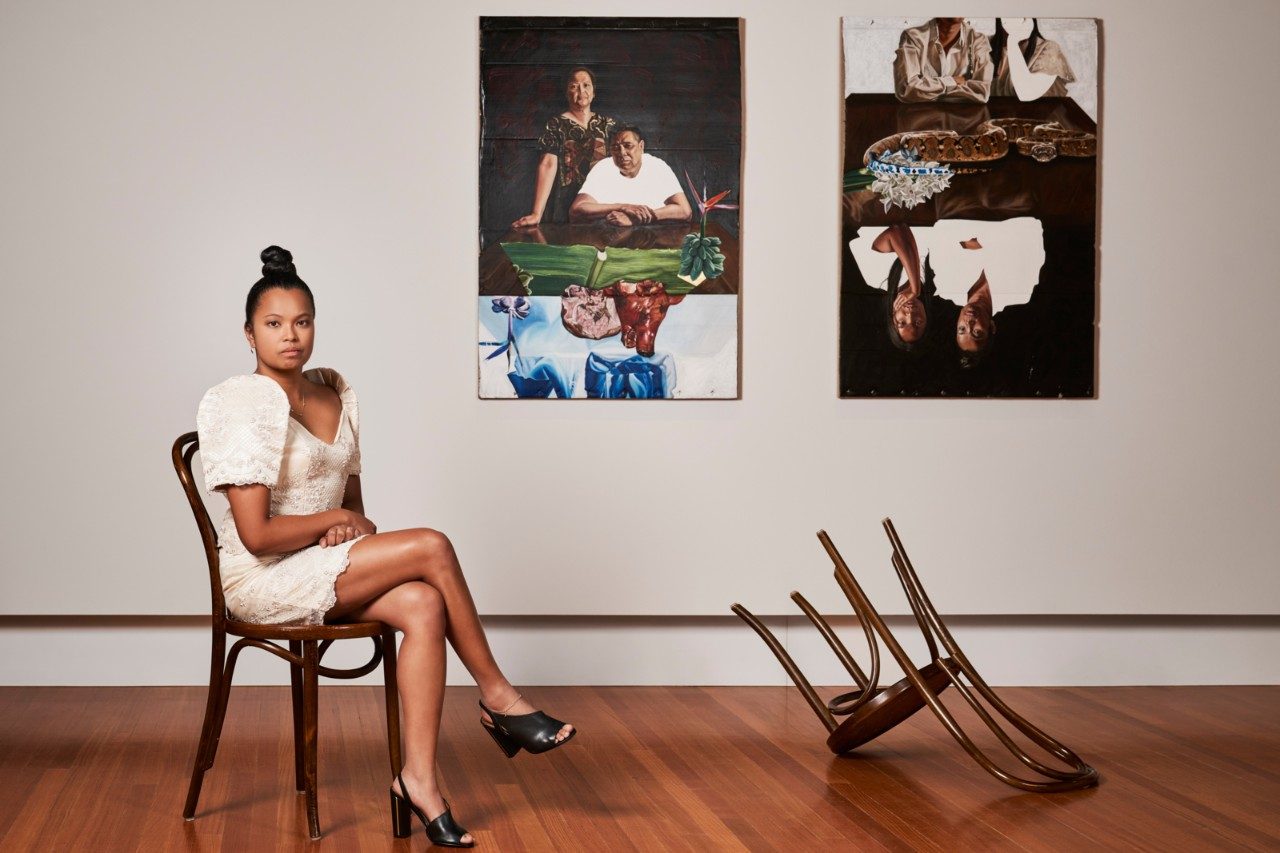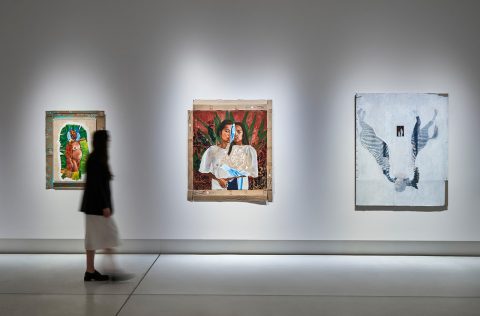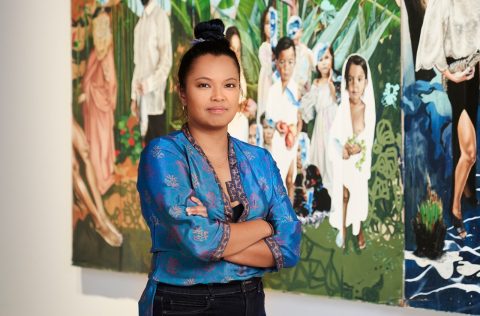Artist Marikit Santiago on How Motherhood Inspires Her Work

Motherhood is intrinsic to the vibrant work of this Sydney artist.
Look at the borders of Marikit Santiago’s 2021 Archibald Prize entry Filipiniana (below) and you’ll see a barcode from an IKEA box. The dynamic self-portrait, in which the partly nude artist stares boldly at the viewer, is made on recycled cardboard from a flat-pack children’s bed. The piece includes drawings by her daughter Maella, 10, who is credited for her contribution.

In the art world, where pushing boundaries is the norm, Santiago, 38, is doing something rarely seen. “The strength in my work is personal and being a mother defines who I am,” she says of Maella, Santi, eight, and Sarita, five. Not only are her children the subjects of her work, they are also regular collaborators, adding their own pencil and texta markings.
Between school pick-up and drop-off, Santiago works out of a studio at her home in Parramatta, western Sydney. Though she once rejected her migrant background and Catholicism, she has since embraced both and finds them fertile ground for her practice, exploring themes of patriarchy, sexuality, colonialism and colourism, and weaving in Biblical narratives. She often appears naked in self-portraits, subverting the Western art canon and male gaze. “I’m always meeting the viewer’s eye… in this position of simultaneous vulnerability and empowerment.”
Her use of cardboard, a material that represents the balikbayan boxes sent by migrants back home to the Philippines, is deliberately placed in contrast by her application of 24-carat gold leaf. “I like to play with our perception of value,” she explains. And while Santiago concedes the cardboard causes headaches for conservators, she’s unfazed that her art may not survive for centuries. “My work is for now.”

Studied: Master of Fine Arts, UNSW School of Art & Design
Awards: Three-time finalist, Archibald Prize; winner, Sir John Sulman Prize 2020; winner, Art Gallery of NSW 2024 La Prairie Art Award
What the critics say: “Using oil paint and gold leaf alongside humble materials, such as cardboard boxes and markers, Marikit produces rich and detailed compositions, layered with cultural and religious symbolism.” – Beatrice Gralton, senior curator of contemporary Australian art and Brett Whiteley Studio at the Art Gallery of NSW



